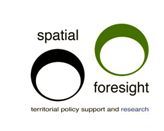By
Viewing cities as complex adaptive systems, a recent workshop of the Resilience Alliance held in
What this focus provides is a multi-level understanding of the resilience of urban systems which recognises the role of metabolic flows in sustaining urban functions, human well-being and quality of life; governance networks and the ability of society to learn, adapt and reorganise to meet urban challenges; and the social dynamics of people as citizens, members of communities, users of services, consumers of products, etc, and their relationship with the built environment which defines the physical patterns of urban form and their spatial relations and interconnections.
Metabolic flows
The message that emerges is that virtually every city and its urban landscape depend for its survival on an integrated global network of production, supply and consumption. This reliance on distant zones renders cities vulnerable to ecological change and geopolitical instability as well as the tyrannies of distance. Without massive increases in material and energy efficiency, the present consumption patterns cannot be sustained. But that alone is not enough – efficiency on its own can lead to declines in functional diversity. Pathways of inflow and processing need to be able to cope with a variety of shocks. Regional self-reliance and material recycling can foster resilience.
Social dynamics
People within cities take on a wide variety of roles, as citizens, members of various communities, users of services, consumers of products, and the list goes on. Urban individuals and their interactions with urban landscapes as groups or communities are influenced by a set of cultural patterns referred to as the social order (Force and Machlis 1997). The social order commonly includes three main mechanisms for ordering behaviour: personal identities (such as age or gender), norms (rules for behaving) and hierarchies (for example, wealth or power). Links between social order, the functioning of social systems, and stocks of social capital are beginning to emerge with implications for social dynamics and resilience. For instance, communities with dense social networks are thought to have greater capacity for both responding and adapting to environmental change. In recent years, several social commentators have reported on the erosion of civic engagement and mutual trust in urban areas (Frumkin 2002). For instance, Putnam (2000) argues in his book Bowling Alone that more time spent commuting to and from work in urban areas means less time with family and friends, and less time for engaging in community, resulting in increasing reductions of social capital.
What we also see in urban areas is considerable social stratification and inequity. Many housing developments these days are built to specific price ranges, creating income homogeneity within neighbourhoods, and fostering income inequality across metropolitan areas. These patterns are reinforced or broken down by the dynamics of social composition, with residential neighbourhoods becoming gentrified or ghettoized, based on preferential difference among their populations. Often for very mild preferential bias, dramatic segregation can take place. This is good example of how cities restructure themselves with the result that cities often look more segregated around race and class than the attitudes of their residents suggest (Batty et al 2004). Collectively, these trends imply that certain features of urbanisation tend toward grater social stratification and declining social capital, resulting in systems vulnerable to shocks and surprise.
Governance networks
The challenges posed by the rapid pace of urbanisation and related impacts on the environment require networks and institutions that are able to capture and share knowledge in a transparent fashion, adapt to social – ecological changes, and build the capacity for long term observation, monitoring and perspective. The role of local, regional and international networks in defining common grounds on institutions and governance systems required for sustainable management of urban landscapes need to be better understood and utilised by various levels of governments. Governance and institutional structure need to increasingly take account of collaborative participatory approaches through development of arenas and adaptive co-management and community-managed areas, including the development of transdisciplinary academic initiatives.
Cities with good governance have mechanisms for redistributing services and benefits to large proportions on their population, such as water, energy, sewer, health, education, law and order. Without equitable mechanisms for effective redistribution, the urban poor and disadvantage, often tend to miss out.
Scale mismatch is often the source of maladapted land use decisions in urban landscapes. Competing or overlapping, jurisdictional between local, regional and national levels often leads to a lack of power or financial resources where and when they are most needed. When this occurs informal institutions are often left to provide the infrastructure needs of the poor and disadvantage.
The USA’s National Academy of Science’s Panel on Urban Population Dynamics has identified five key dimensions of urban governance – (1) capacity to provide adequate services, (2) ability to raise and mange sufficient financial revenue, (3) skill to deal with issues of urban diversity, fragmentation and inequality; (4) capacity to respond to rising urban security threats, and (5) the increasing complexity of authority and managing across jurisdictions (NRC 2003). Placing these dimensions within a resilience framework, our interest is how institutions and organisations are able to shift from rigid to more fluid and responsive patterns of governance.
Lessons from complex systems science suggest urban decision makers should become less concerned with prediction and control, and more concerned with organic, adaptable and flexible urban management (Lister 1998) to be implemented in the spirit of experimentation and learning-by-doing (ICSU 2002, Felson and Pickett 2005). Unfortunately, few urban governments are equipped with the technical and managerial expertise they need to take on this new mode of governance. Urban decision-makers often have limited ability to influence the management of the foreign ecosystems on which their cities depend. Conversely some cities, especially those in developing countries, are pushing their environmental problems on others. Industrial relocation, a widely accepted strategy by Asian cities to address inner city environmental problems, is such an example.
Built Environment
Urban planning occurs within a political ideology that informs the decision making process of the time. Thus to a large extent, we live in ‘yesterday’s cities’ in the sense that many of the urban patterns we see today – roads, buildings, land ownership, etc – reflect decision making periods of the past. As the prevailing ideology changes so does the planning of our cities. Understanding the role of time and the way it conditions future urban options is a crucial part of urban resilience.
The spatial organisation of a city and its infrastructure is also important (Alberti et al 2003). For instance, the physical location of roads, railways, airports, etc, has a significant influence on the flow of commerce and people in and out of cities (Garmestani et al 2005). The spatial pattern of the built environment is created through both chance and necessity (Batten 2001). Geographical endowments, transport possibilities, and economic prospects, all act to produce a locational landscape for attracting industry and employment to a city. The amount of development required to support a given number of people will vary according to decisions on the density of housing, infrastructure requirements, and the influence of any biophysical or other constraints.
Urban planning can be thought of as an expression of hypotheses about the effects of urban planning and public health outcomes, but it would seem that in the face of the growing epidemics of obesity, diabetes, cardiovascular and another so-called lifestyle diseases, that it is time to take a another look at the role of urban planning and its influence on the quality of human-environment interactions and impact on human well-being.
By analysing urban form, we suggest opportunities will arise for investigating new ways of changing the built environment in line with the changing needs and requirements of urban populations. This is not a quest to discover the utopian urban form, but rather a challenge to view urban areas as complex and dynamic spaces. Because the dynamics of cities are non-linear, their problems cannot be solved by linear planning methodologies. New innovative means of planning that deal with urban complexity are needed. The implications of such a focus are profound. Change is essential, adaptation is crucial, and the past is the past.




